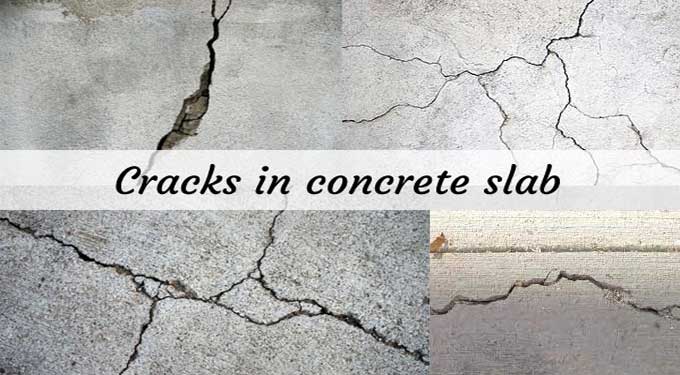
How to avoid defects (like cracks) in RCC Slab
India's homes and businesses suffer from slab leaks caused by cracks and leaky foundations. It is common for these issues to arise within 15 years after construction or less than a quarter of the structure's design life.
It is important to note that ignoring defects such as cracks in the slab can result in heavy repair and maintenance costs over time. In addition to providing a point of entry for water, these cracks also allow chemicals dissolved in the water to enter the slab, causing the damage.
How to achieve Maximum Durability of RCC
A. Cement Quality Checking for Slab
It is important that the cement used for the job has a low heat of hydration and has a watertight finish after setting. Regarding these factors, Portland Pozzolana Cement (PPC) is most preferred. It recommends using PPC when there is sufficient time for construction.
PPC concrete is slow to gain strength when compared to concrete containing OPC. For OPC to achieve the same strength as PPC, more cement is needed.
It recommends using a Design mix when using PPC. The cement best suited to this application is OPC 53 if the time is limited and the formwork must reuse quickly. Utilizing OPC 53 grade cement can save time and reduce cement usage in concrete by using best construction practices.
B. Aggregates Quality Checking for Slab
Grades of aggregates should be satisfactory to maximize density and minimize voids. As 20 mm coarse aggregates are easily available, they are usually used, and generally, their depth is only one-fifth of a slab's depth. To minimize voids and maximize packing density, coarse aggregates of 10-millimeter size are used with 20-millimeter aggregates.
It is possible to have a maximum of 5 percent deleterious materials. In the fine aggregate, salts shouldn't be present.
C. Right Formwork for Slab Casting
The purpose of the formwork is to provide a mold for concrete that has been produced or placed so it will harden and assume the desired shape. Place and compact the concrete while it remains rigid.
A watertight formwork prevents cement slurry from evaporating, resulting in a loss of cement and water content. Concrete becomes honeycombed due to this process as well. Watertight joints are made by using brown tape.
Props and connections should be designed in such a way that the formwork can be easily removed and reused with as little maintenance as possible. Cleaning and treating the formwork faces that come in contact with concrete with a form release agent will result in a thin, uniform coating.
D. Slab Casting Placement
A dry day should be selected for casting the slab. Extremely hot or extremely cold weather should not be used for concrete construction. In the case of concrete in summer, the freshly cast slab should be covered with a damp gunny bag after 4-5 hours to avoid plastic shrinkage cracks. The sooner you can begin curing, the better.
It is a must that the formwork is level, with rebars properly tied and spaced between rebar to ensure that concrete is poured after proper formwork alignment and leveling have been achieved.
E. Slab Compactness
Compaction of the concrete within the formwork should ensure that it molds around the reinforcement to eliminate large holes, honeycombs, and air pockets. High compressive strength ensures due to maximum density and minimal voids.
F. Slab Concrete Curing
In either case, the process should last seven to ten days, either with ponding or membranes.
G. Ponding
Curing is best done via ponding. Water pours into the small ponds by using mortar or clay to divide the slab into rectangular sections. Water is needed to cure this way. It starts curing 24 hours after casting concrete.
H. Membrane
When there is a shortage of water, membrane curing may use. The membrane prevents water from evaporating from the slab as it covers it with a waterproof covering.
Wrapping it Up
Cracks have become a very common occurrence in residential and commercial buildings in India in the past 15 years. These problems typically manifest after 15 years of a building's construction. It is advisable not to overstuff the slab with construction materials after it has been cast. After the slab is cast, it should avoid until 28 days have passed.
Repair mortar containing polymer modification should apply to honeycombs. Depending on the span and type of cement used, the slab should be de-shuttering 7-10 days after being cast.
To get more details, watch the following video tutorial.
Video Source: Civil Engineers


